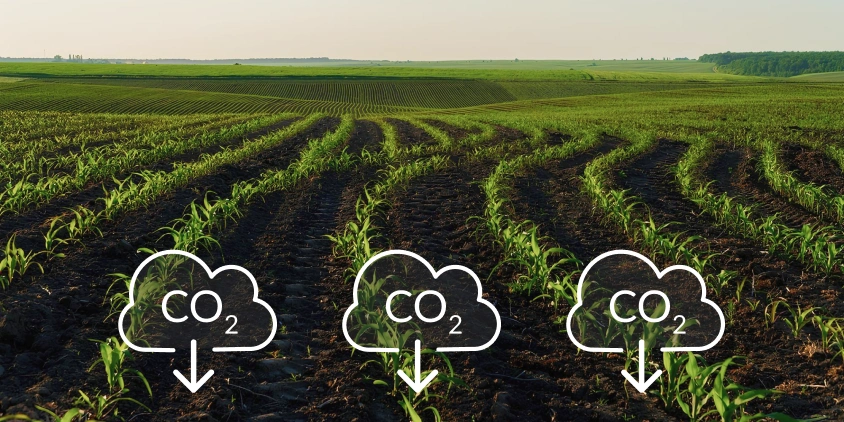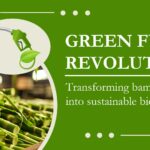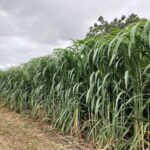Carbon Farming

Turning Agriculture into a Climate Solution
Carbon Farming: Turning Agriculture into a Climate Solution
As the world grapples with the realities of climate change, a surprising hero is emerging from the fields: carbon farming. This innovative approach is transforming agriculture from a source of greenhouse gas emissions into a vital part of the climate solution. But what exactly is carbon farming—and how can it reshape the future of farming and the planet?
What is Carbon Farming?
Carbon farming refers to a suite of agricultural practices designed to capture and store carbon dioxide (CO₂) in soil and vegetation. Unlike conventional agriculture, which often releases carbon through ploughing, overgrazing, and synthetic inputs, carbon farming focuses on enhancing the land’s natural ability to sequester carbon.
According to the Intergovernmental Panel on Climate Change (IPCC), agriculture, forestry, and land-use changes can provide up to 30% of the mitigation needed to keep global temperature rise below 2°C

Why Agriculture Matters in the Climate Equation
Agriculture is a double-edged sword. On one hand, it contributes to climate change—around 5.3 billion tons of CO₂ equivalent per year, or roughly 10–12% of total emissions. On the other, it holds immense potential to draw carbon out of the atmosphere and store it underground for decades, even centuries.
Healthy soils act as carbon sinks, can store 3 to 5 times more carbon than the atmosphere, offering a massive opportunity for mitigation. By shifting practices, farmers can tap into this potential to mitigate climate change while improving their own livelihoods.
Key Carbon Farming Practices
- Cover Cropping
Planting crops like clover, vetch, or rye during off-seasons protects soil from erosion and improves soil structure. These plants pull carbon from the air and deposit it into the soil. The farms in Midwest of US uses cover crops result in increased SOC by 0.3–0.5 tons/ha/year over 5 years2. No-Till or Low-Till Farming
Minimizing soil disturbance, reduces 30–40% CO₂ compared to conventional tillage, increases water retention by up to 25% and preserves soil microorganisms, which play a role in carbon storage.
Brazil’s “Zero Tillage Revolution” helped sequester over 16 million tons of CO₂ per year across 32 million hectares.
2. No-Till or Low-Till Farming
Minimizing soil disturbance, reduces 30–40% CO₂ compared to conventional tillage, increases water retention by up to 25% and preserves soil microorganisms, which play a role in carbon storage.
Brazil’s “Zero Tillage Revolution” helped sequester over 16 million tons of CO₂ per year across 32 million hectares.
3. Compost and Biochar Application
Adding organic matter or biochar (a stable form of carbon made by pyrolyzing biomass) increases soil fertility and enhances long-term carbon sequestration.
Trials in Madhya Pradesh show biochar-enriched fields improve soil pH and increase soybean yields by 15–20%.
4. Agroforestry
Integrating trees with crops or livestock provides shade, reduces erosion, and captures carbon both above and below ground.
In Kenya, the “FMNR” (Farmer-Managed Natural Regeneration) movement restored over 5 million hectares, storing millions of tons of carbon while doubling crop yields.
5. Managed Grazing
Rotational grazing systems mimic natural herd movements, promoting plant growth and deeper root systems that store carbon.

Benefits Beyond Carbon
Carbon farming is not just a climate strategy—it’s a holistic approach that delivers multiple co-benefits:
-
Improved soil health –
According to ICAR, India’s average soil organic carbon content is only 0.3–0.4%, but regenerative practices can raise it to 0.7–1.0%, improving nutrient availability and microbial activity.
The National Bureau of Soil Survey confirms that even a 0.1% increase in SOC can significantly boost soil structure and reduce dependency on chemical fertilizers.
-
Higher crop yields and resilience to droughts –
The Community Managed Natural Farming (CMNF) initiative in Andhra Pradesh has brought over 800,000 farmers into regenerative practices. Reports show 20–50% yield improvements in crops like chilli, paddy, and cotton, along with reduced pest attacks and better drought tolerance.
A study by Azim Premji University (2022) on CMNF farms found a 50% reduction in water use and a 42% higher net income compared to conventional farms.
In Bundelkhand, integrating biochar and compost led to 25–30% higher yields in pulses and vegetables, especially during dry spells.
-
Better water retention and reduced runoff –
Research from ICRISAT indicates that farms practicing carbon-enhancing methods saw runoff reduce by 30–50%. Moreover, In Rajasthan’s Barmer district, farms using biochar and mulching retained up to 30 mm more water per square meter during the monsoon season.
-
Increased biodiversity and pollinator support
In the tribal belts of Madhya Pradesh and Chhattisgarh, agroforestry initiatives promoted by the National Agroforestry Policy have led to a rise in native tree cover and pollinator species, such as wild bees and butterflies.
It also opens doors to carbon credits, providing farmers with a new revenue stream by selling verified carbon offsets on environmental markets. 1 carbon credit is equal to 1 metric ton of carbon dioxide (CO₂) and can be sold for $130 – $150 (CDR.fyi).
Challenges and Barriers
Despite its promise, carbon farming faces hurdles:
- Measurement and verification: Tracking carbon sequestration is complex and costly.
- Incentives and policy support: Many farmers need financial and technical assistance to transition.
- Awareness and education: Not all farmers are familiar with carbon-friendly practices or their long-term benefits.
Governments, NGOs, and private companies are stepping in to close these gaps through pilot programs, research, and climate-smart funding.
A Growing Global Movement
Countries around the world—from Australia to India to the United States—are embracing carbon farming. In India, initiatives that blend traditional knowledge with modern regenerative techniques are helping smallholders combat climate volatility. In Africa, carbon farming projects are improving food security and restoring degraded lands.
With the right support, carbon farming could be scaled up globally, sequestering billions of tons of CO₂ while revitalizing rural economies.
Globally, the “4 per 1000” initiative—launched by France—calls for a 0.4% annual increase in soil carbon stocks to offset global emissions. If adopted worldwide, this alone could cancel out over 3 billion tons of CO₂ each year.

Conclusion: Cultivating a Climate-Positive Future
Carbon farming offers a powerful, nature-based solution to one of the greatest challenges of our time. By working with the land—rather than against it—we can unlock the hidden potential of our soils to cool the planet, feed communities, and restore ecosystems.
In the climate conversation, agriculture is no longer just part of the problem. With carbon farming, it becomes a cornerstone of the solution.





